Hope for the best; prepare for the… puns.
When it comes to cute Peperomia, Hope might just take the crown.
The tiny, round leaves are absolutely adorable, unlike its scientific name Peperomia deppeana×quadrifolia ‘HOPE,’ which we can all agree is a total mouthful.
Despite being a tropical plant, its semi-succulent leaves lead to some specific requirements that need a little extra attention.
But all Hope is not lost (last one – I promise!); this guide will make everything clear. Let’s jump in.
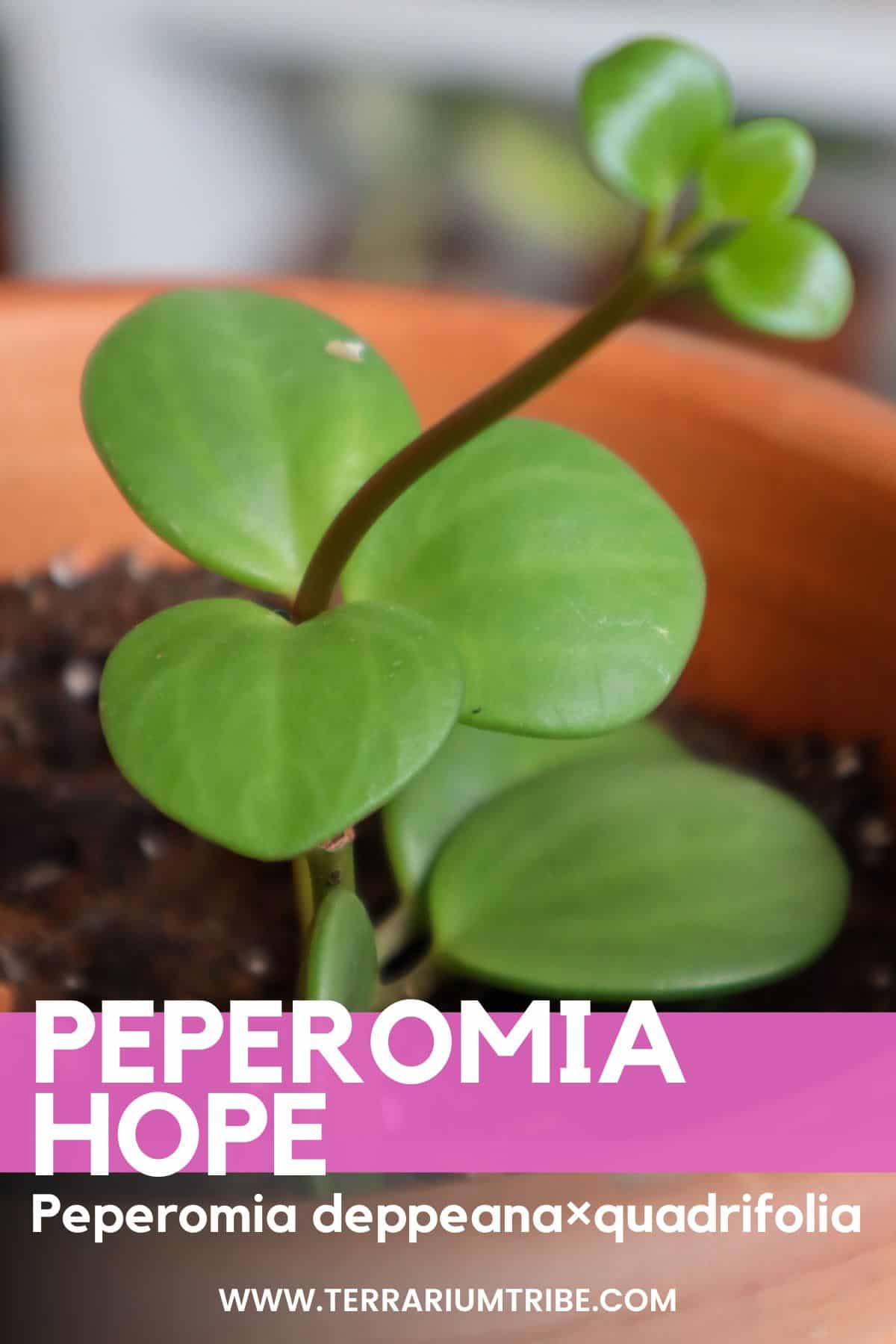
Peperomia Hope Overview & Origins
As you might have guessed by its name, the Peperomia ‘Hope’ was created using the Peperomia quadrifolia and Peperomia deppeana, and wow is the resulting plant gorgeous.
It’s like the trailing succulent version of a four-leaf clover with a subtle watermelon striping.
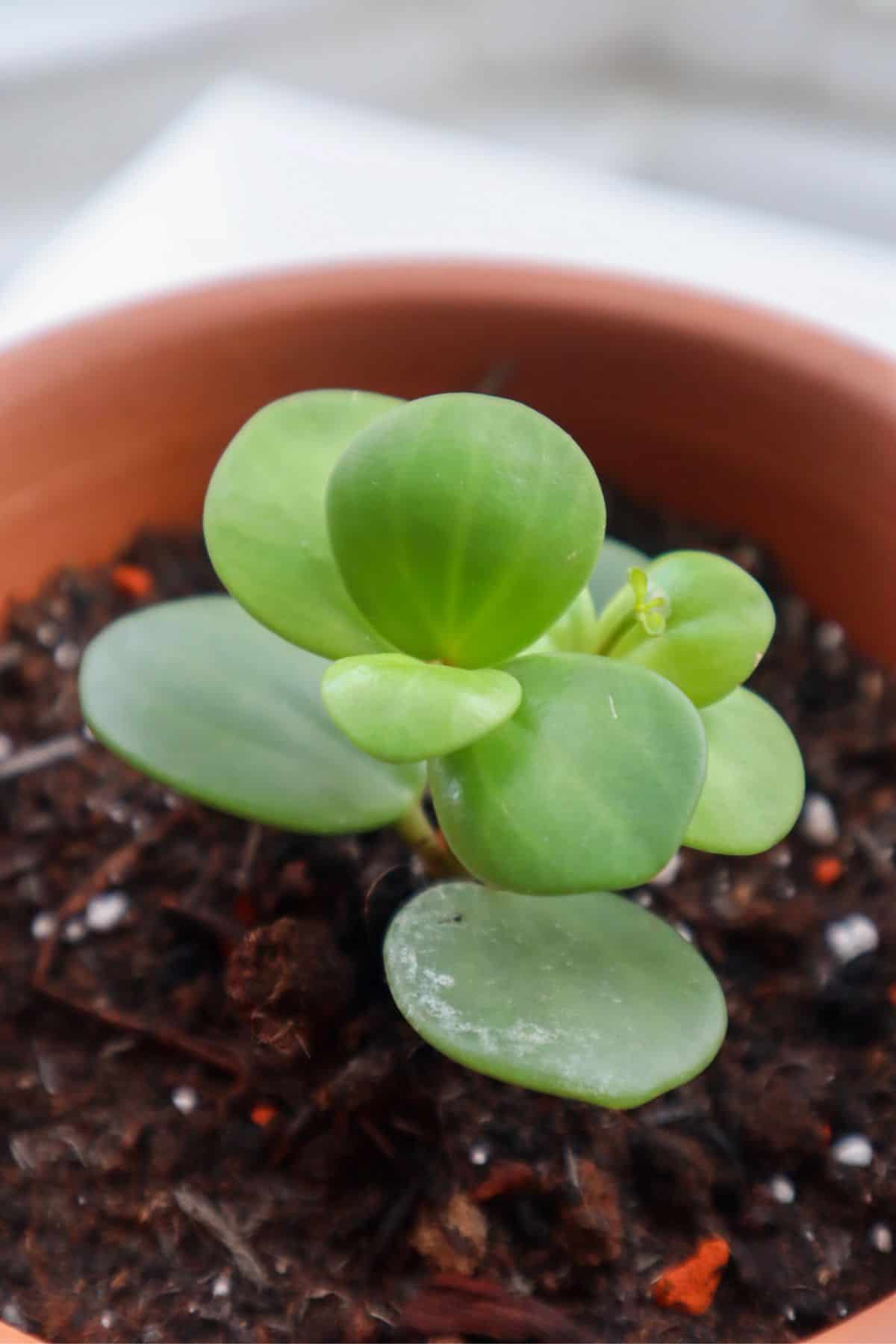
Born to be a celebrity, this child star has outshone its parents and become vastly more popular.
A sweet addition to any space or location, this compact variety is exactly what you need in your life, so without further ado, shall we get on with it?
Where to Buy Peperomia Hope Online
See the links below to purchase from reputable terrarium plant shops and marketplaces (may include affiliate links).
Peperomia Hope Care & Growth
| Plant Type | Vine, epiphyte |
| Lighting | Moderate to bright, indirect light |
| Temperature | 65-80°F (18-26°C) |
| Watering | Low, even moisture |
| Humidity | Low to moderate (40-80%) |
| Growth | 3-10 inches |
Light Requirements
Don’t let the succulent-like texture of the Hope’s leaves trick you – this plant doesn’t love direct light as much as you would think. Too much direct sunlight will burn the fleshy leaves.
Bright indirect light will always do well by this plant.
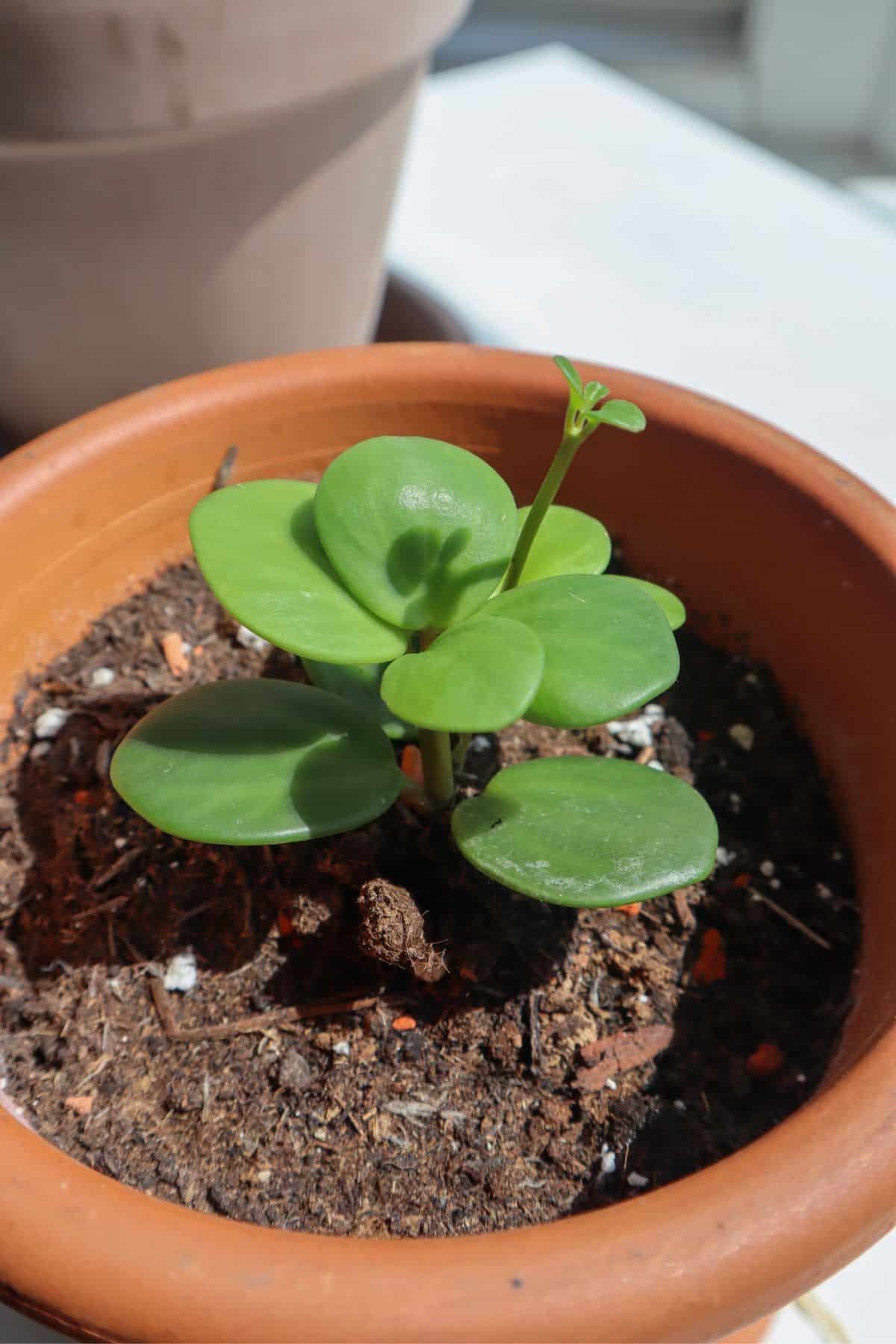
Brighter light tends to keep these more compact and with shorter internodes, so it’ll be less of a trailing plant. At the other end of the scale, too little light will lead to leggy growth.
Another sign your Peperomia ‘Hope’ isn’t receiving enough light is if the deep green color begins to look washed out.
On that note… I have a confession. As you might imagine, bright light conditions are somewhat in high demand in my home, and my poor Hope took one for the team.
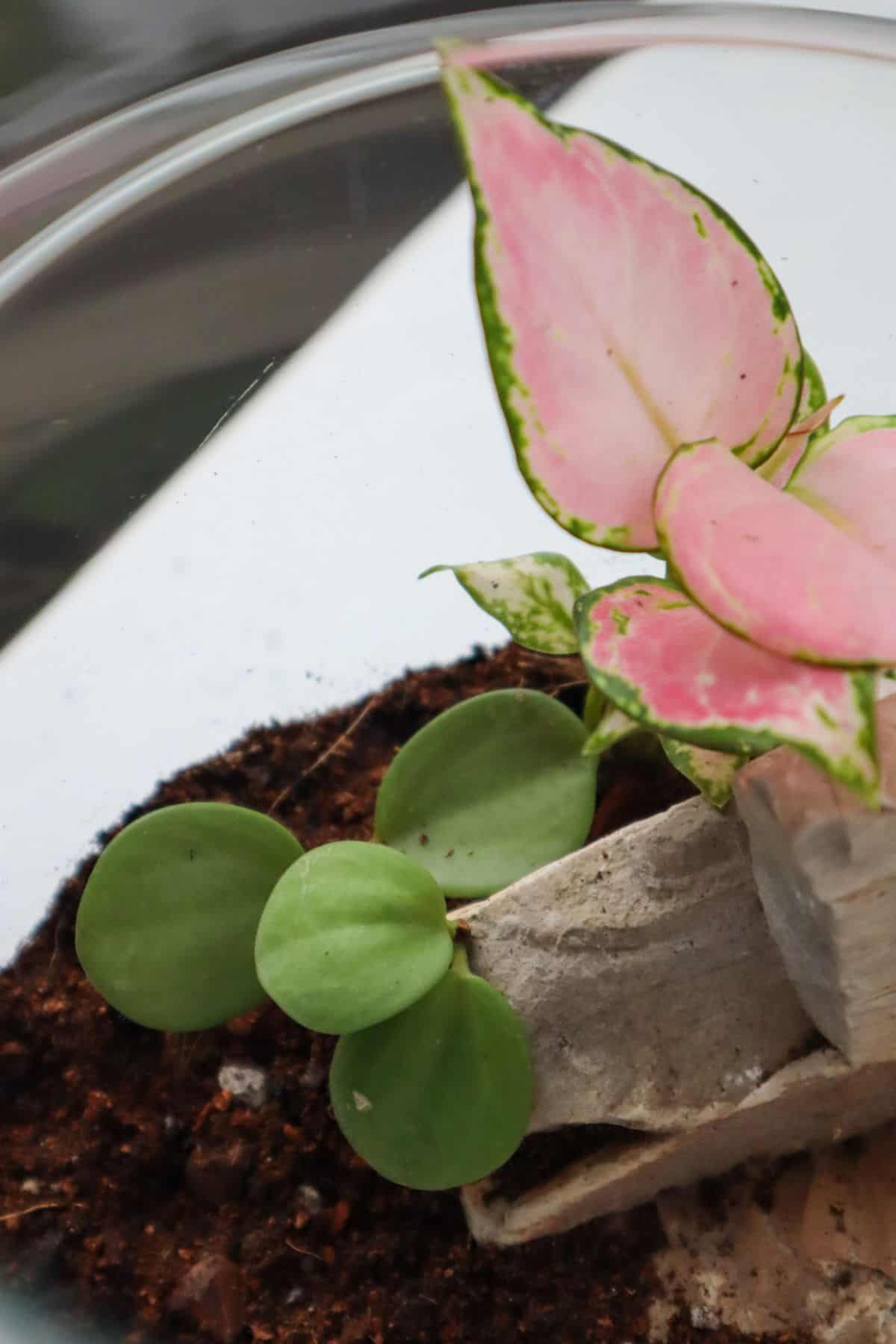
Watering the Peperomia
Watering is essential to get right with the Hope – and it’s easy to see why.
- This Peperomia is the plant equivalent of a camel; its succulent leaves can retain moisture better than other tropical species.
- Its root structure is unbelievably delicate and shallow. As in, so measly that when I bought mine and saw the state of it, I was sure it wasn’t going to make it. (I was wrong; it’s just how that plant is).
Because of these features, avoiding root rot is crucial.
In or out of a terrarium, drainage is going to be your biggest ally. Either in the form of a pot with drainage holes or a false bottom – choose your player.
As a houseplant, this plant will thrive in a soak-and-dry watering cycle, so only water when it’s feeling dry to the touch.
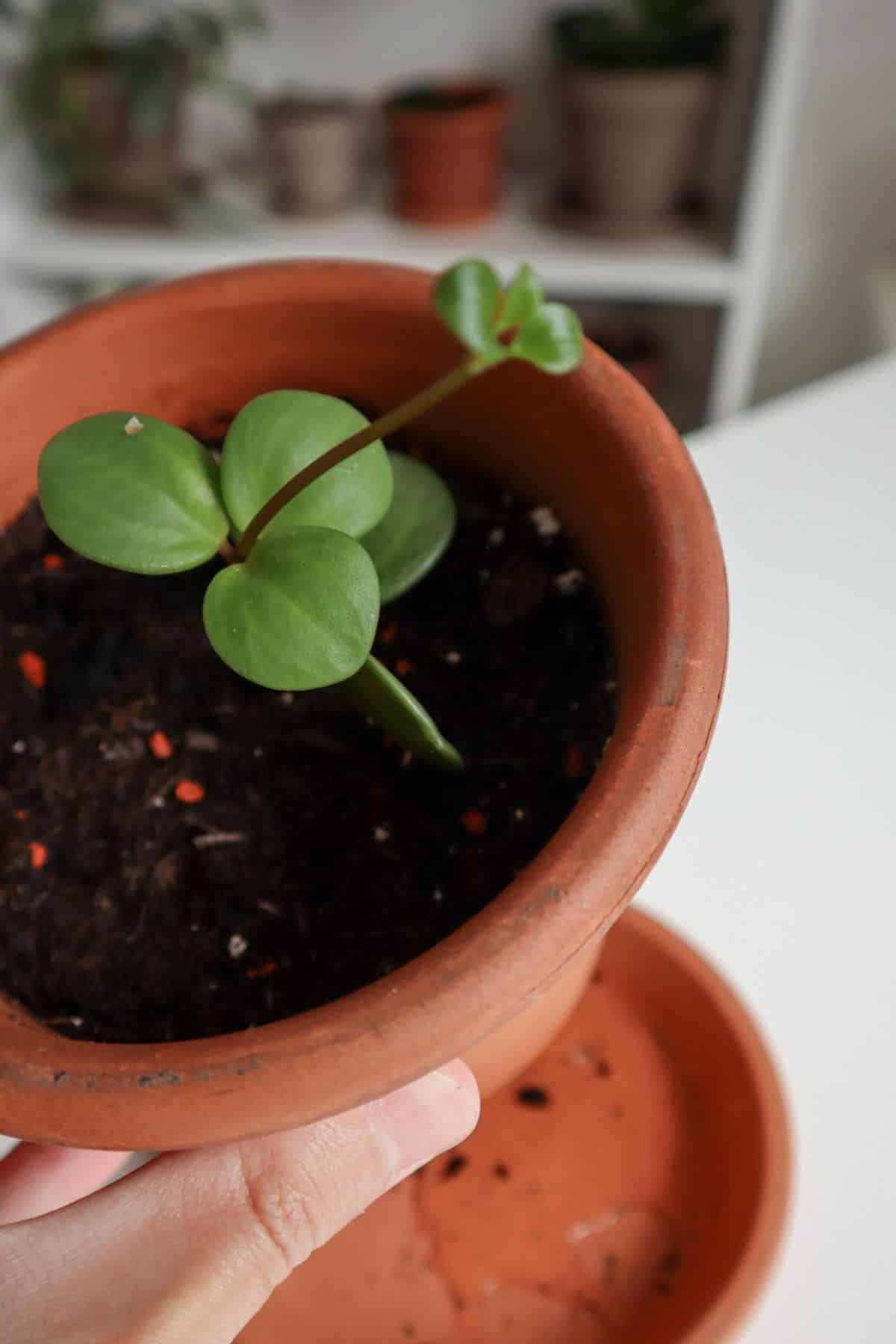
In a terrarium, if you’re planting it terrestrially, make sure you don’t add excess water to the system as it’s hard to remove once added.
Alternatively, like many Peperomia, the Hope makes a great epiphyte. Why not try mounting it on a hardscape piece with its roots in a little sphagnum moss?
Soil/Substrate
Getting the soil right will go a long way for your Peperomia ‘Hope.’
With its moisture preferences in mind, the best soil mixture will be something high in orchid bark, pumice, or perlite to allow for plenty of drainage.
I’d recommend coco coir for the base – it’s brilliant at retaining moisture. This might sound contradictory, but stick with me for a moment…
Because the roots are shallow, and the topsoil dries out more quickly than the soil beneath, moisture-retaining coco coir will help prevent your plant from becoming too thirsty.
It is a tropical plant after all, so moist soil isn’t the enemy (it’s just soggy soil we need to be wary of).
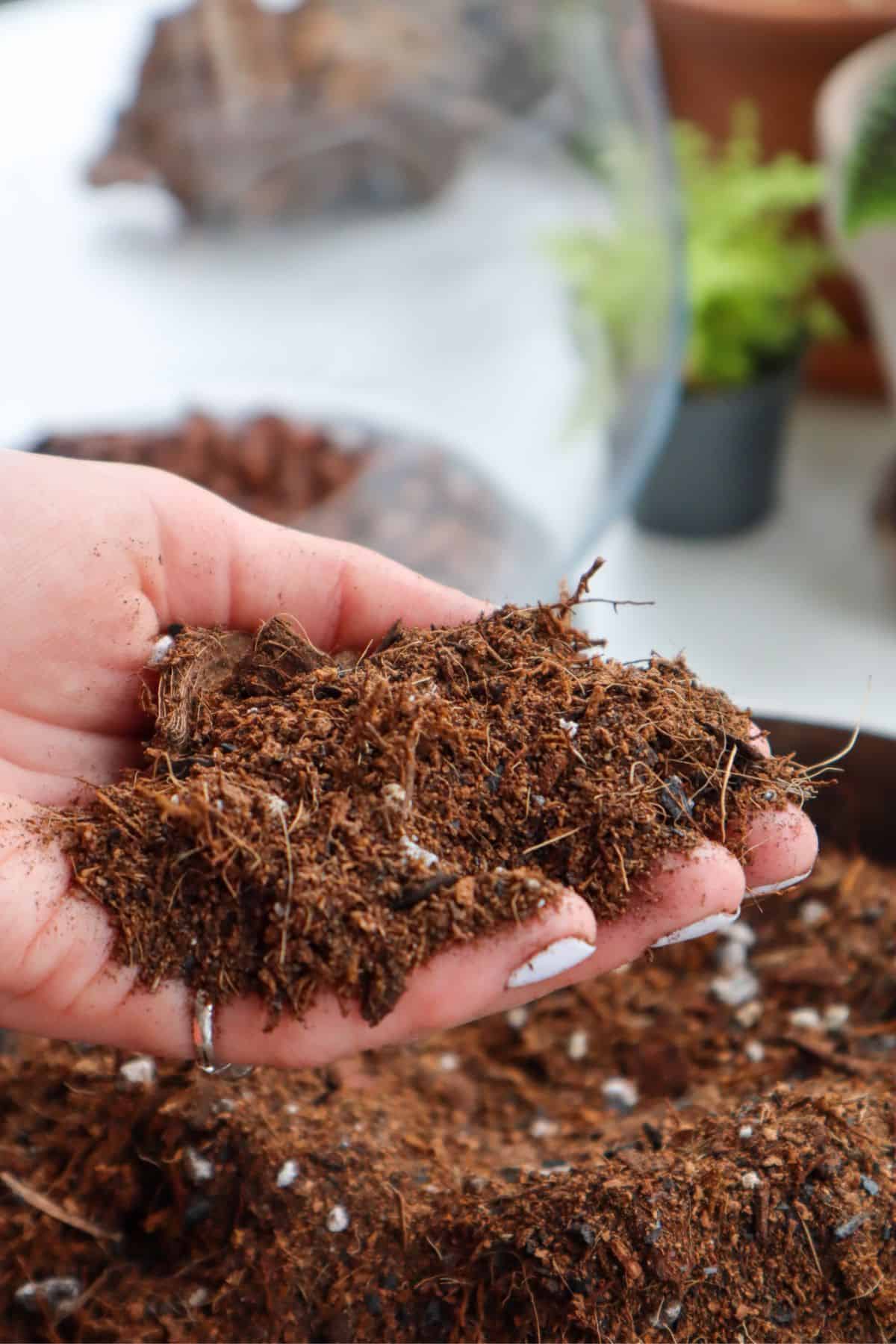
Temperature & Humidity Needs
Peperomia plants are incredibly forgiving when it comes to humidity, they’re famous for being able to tolerate anything as low as 40-50% humidity. Which is pretty low for tropical plants
But, this comes with a caveat.
Despite being a hybrid, the Hope’s plant parents hail from Central and South America, so humidity as high as 80% in the home – or even higher in a terrarium – is greatly appreciated.
Similarly, the Hope isn’t too demanding when it comes to temperature; anything in the range of typical household conditions 60-80°F (15.5-26.5°C) will do just fine.
Growth Rate and Flowers
This Peperomia certainly isn’t the fastest growing plant in the world, but when it puts out new leaves, they crop up in groups of two to four – such a show off.
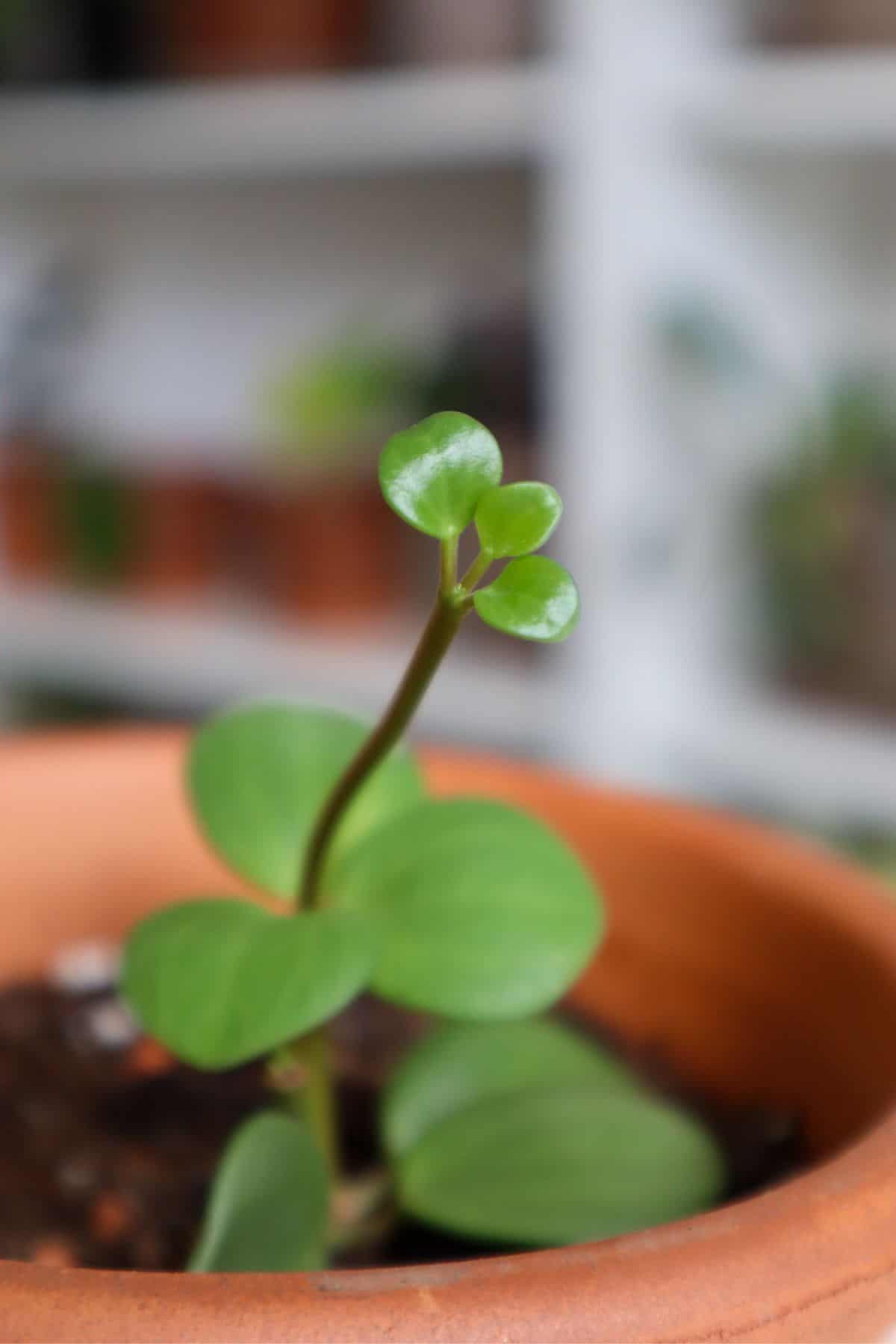
While my plant is pretty compact, Peperomia ‘Hope’ is a beautiful trailing vine when it really gets going.
A versatile plant, it looks gorgeous, cascading from a shelf or creeping across the floor of a terrarium.
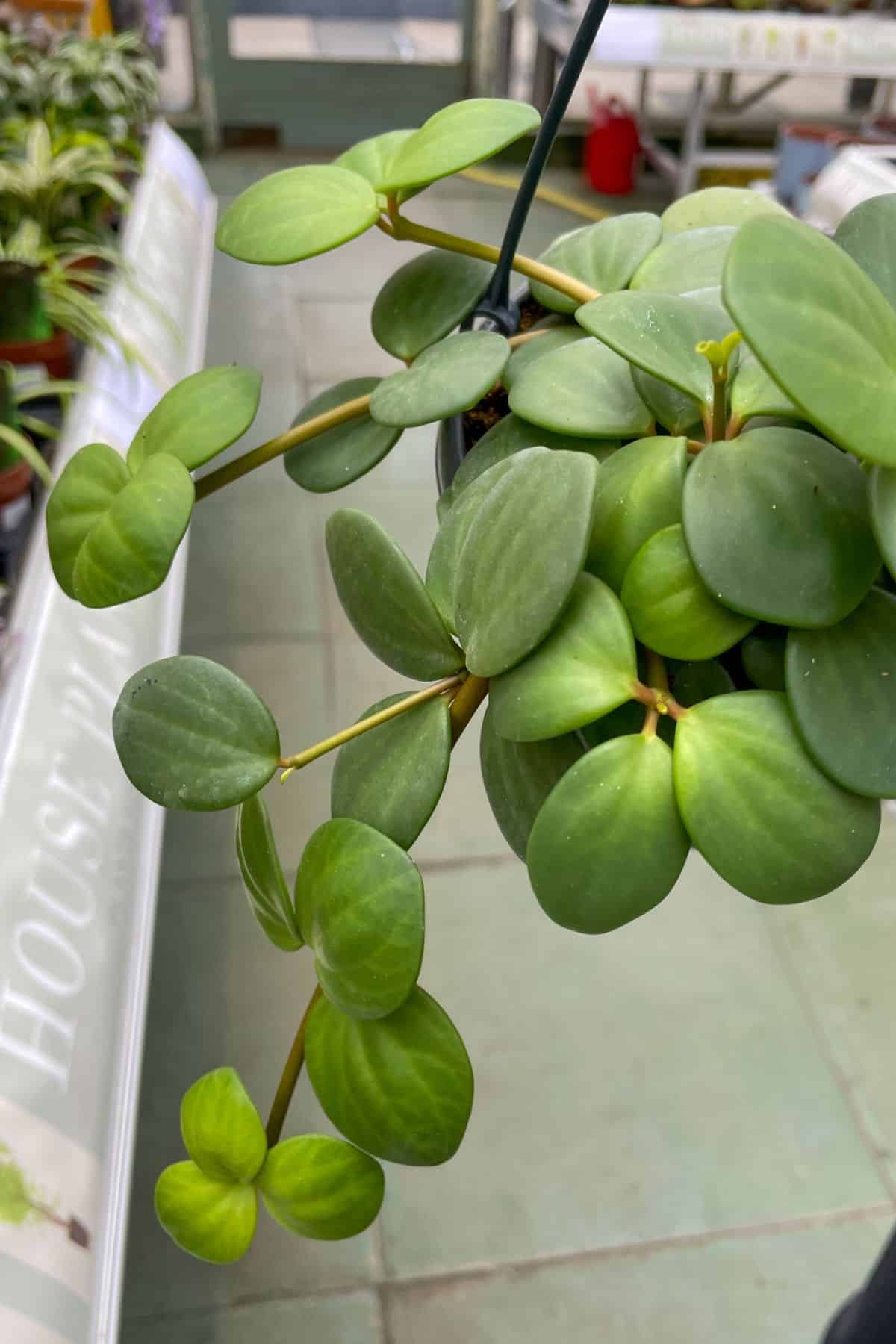
If it gets longer than you’d like, feel free to trim it to maintain it at a more manageable size.
Anyone who’s had Peperomia will know, they’re all too willing to put out flowers when they’re doing well. But they’re not exactly cute… more like flower spears than flowers.
You can let them do their thing or snip them off to promote more growth.
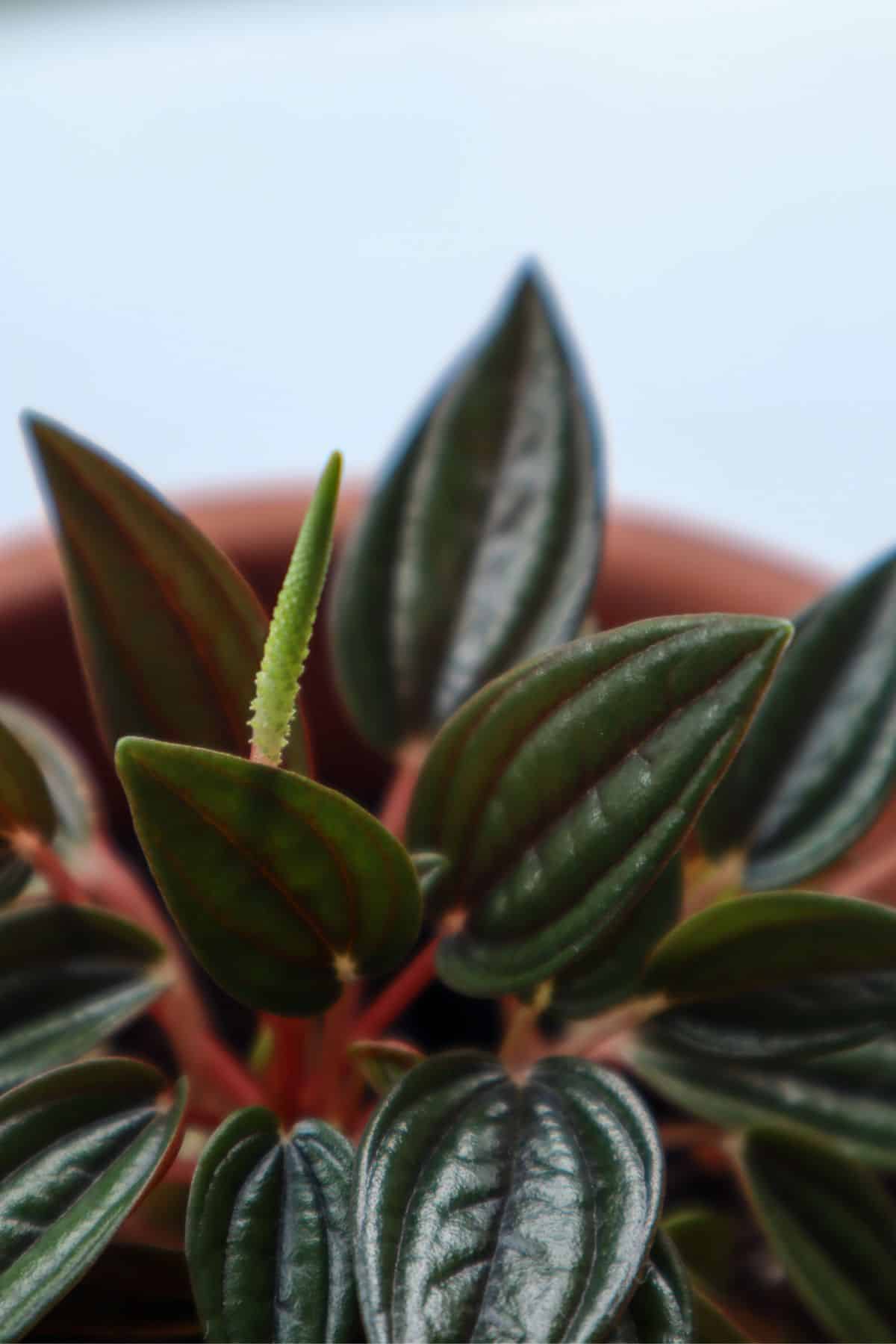
Pilea Hope Propagation Techniques
The Peperomia ‘Hope’ has become well-known in the plant community for propagating very well via stem cuttings. Hurrah!
Snip a 3-inch cutting from the mother plant, remove the lower leaves but keep the newer leaves, allow the stem to callus, and pop it in a glass of water. Easy, right?
Wait and watch as it produces roots. The plant patent documents that it takes around 25 days to make rooted cuttings at a standard temperature of 68°F. Once it’s ready, you can plant it up and take it to your local plant swap like a beloved prized cow.
It can also be propagated by leaf cuttings, but when stem cuttings are so effortless, I say, why make life difficult?
Varieties & Similar Plants
Like Peperomia? You’re in luck; there are a few more out there. An estimated 1500+, actually…
We have plant profiles on Peperomia ‘Pepperspot’, Peperomia rotundifolia, Peperomia caperata ‘Rosso’, Peperomia polybotrya, Peperomia prostrata, and Peperomia albovittata, so there’s plenty of further content for you to stick your teeth into.
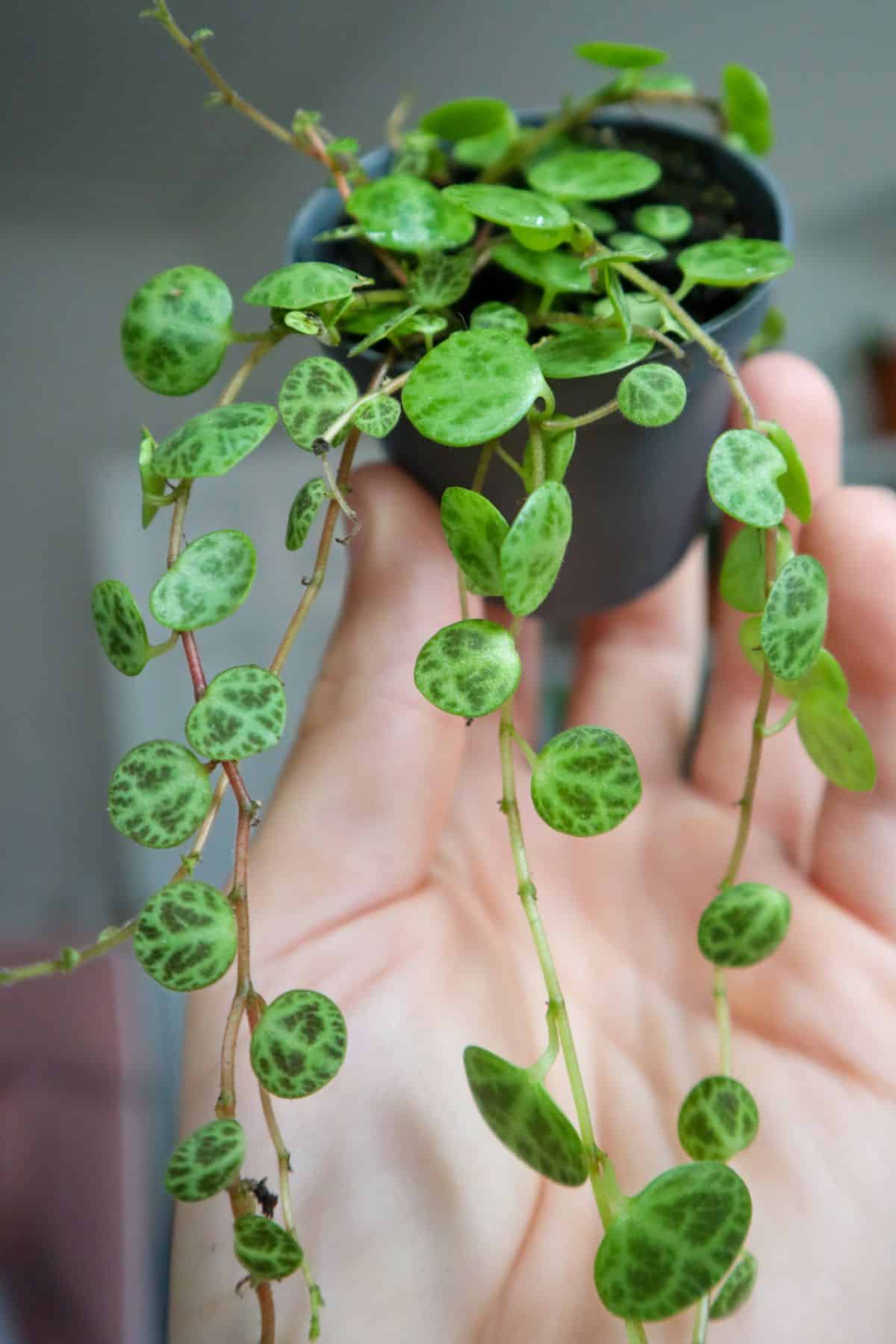
At this time, there haven’t been any cases of variegation on the Peperomia ‘Hope’, but it was only created in 2007 so there’s still time, and I remain hopeful (did you think I could resist closing without squeezing in another pun? 😉).
